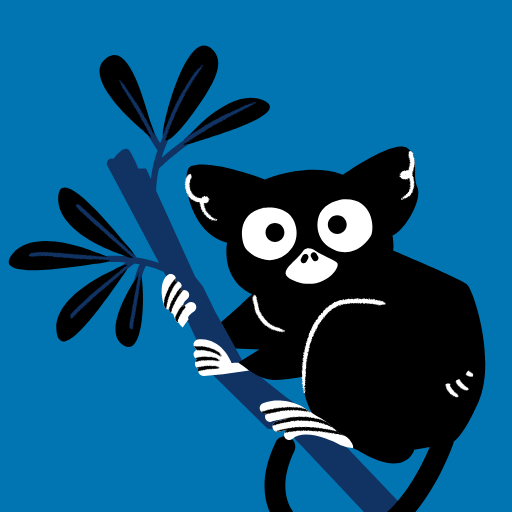Copywriter Interview Questions + Answers in 2024
Getting called for a copywriter interview can feel pretty exciting—like you’re just one step away from snagging that dream job.
You’ve got your resume all spruced up and your portfolio packed with your proudest pieces. But as the interview day draws closer, the butterflies start fluttering.
You start wondering: How do I really make sure I stand out?
How do I show them that I’m not just good with words but also good at understanding what their brand needs and connecting with their audience?
It’s not just about being a great writer. A copywriter interview is your chance to show that you’re a strategic thinker, someone who gets the brand and can deliver results that matter.
This guide to copywriter interview questions is here to help you prep not just by listing questions you might be asked, but by helping you articulate your skills and insights in a way that’s as compelling as the copy you write.
What Are the Best Copywriter Interview Questions Being Asked Right Now?
To prepare for your interview as a copywriter, you should review potential questions that might be asked. We highly recommend looking into the questions we’ve covered below.
1. What inspired you to pursue a career in copywriting?
Interviewers ask this to gauge your passion and motivations for choosing copywriting as a career. It helps them understand what drives you and whether your interests align with the role and the company’s culture.
In your answer, share a personal story or influences that drew you to copywriting, such as a love for storytelling, a campaign that resonated with you, or a mentor who introduced you to the field.
Connect these inspirations to the skills and enthusiasm you bring to your work, and if possible, relate them to the company’s values or goals.
Example Answer
“I’ve always been passionate about storytelling and the power of words to influence emotions and decisions.
During college, I took a course on digital marketing and was fascinated by a case study on a social media campaign that dramatically increased engagement through clever copywriting. This inspired me to explore how strategic writing could drive business results.
I started freelancing to gain practical experience and discovered I not only enjoyed the creative process but also excelled at tailoring messages to different audiences. I see this role as a perfect opportunity to apply my skills and passion to help your brand connect with its customers.”
2. Can you describe a typical day in your previous copywriting role?
This question helps interviewers understand how you organize your day and manage responsibilities, giving insight into your work ethic and compatibility with their team’s workflow.
Describe a structured day, emphasizing time management, prioritization of tasks, and any tools you use to enhance productivity.
Highlight activities that show your strengths in organization, creativity, and collaboration, such as brainstorming sessions, client meetings, or strategy development.
Example Answer
“In my previous role, I started each day by reviewing the content calendar and prioritizing tasks based on deadlines and project stages.
I typically spent mornings drafting new content and afternoons revising and collaborating with the design team to ensure alignment between text and visuals. I used tools like Asana for task management and Grammarly for editing.
This routine helped me stay organized and meet all deadlines, while also allowing flexibility for creative brainstorming and team collaboration, which were crucial for maintaining high-quality content.”
3. How do you stay motivated during repetitive tasks?
Employers ask this to see how you handle less engaging aspects of the job while maintaining productivity and quality.
Describe techniques you use to keep yourself focused and motivated, such as setting mini-goals, using productivity apps, or incorporating periodic breaks to refresh your mind.
Highlight your ability to stay disciplined and effective, even with routine tasks.
Example Answer
“To stay motivated during repetitive tasks, I break the work into smaller, manageable sections and set mini-goals for each.
This approach gives me a clear sense of progress and accomplishment. I also use the Pomodoro Technique, working in focused sprints followed by short breaks.
These strategies help maintain my focus and energy levels throughout the day, ensuring I can produce high-quality work consistently.”
4. What do you think is the most challenging aspect of copywriting?
This question is aimed at understanding your perspective on the difficulties within the field and evaluating your problem-solving skills.
Discuss a specific challenge you’ve encountered in your copywriting career, such as adapting to various brand voices, meeting tight deadlines, or creating content that converts.
Explain how you’ve successfully navigated these challenges, demonstrating your resilience and adaptability.
Example Answer
“One of the most challenging aspects of copywriting for me has been learning to quickly adapt to different brand voices.
Each client or project can have a vastly different tone and style. To handle this, I’ve developed a methodical approach where I deeply immerse myself in the brand’s existing materials and closely collaborate with the brand team to truly capture their voice.
For instance, for a tech startup, I shifted from a formal tone to a more conversational style, which helped increase their user engagement by 30%.”
5. Can you explain the difference between B2B and B2C copywriting?
This question tests your understanding of fundamental marketing concepts and your ability to tailor your writing accordingly.
Clearly define B2B (Business-to-Business) and B2C (Business-to-Consumer) copywriting and discuss the primary differences in audience, tone, and content goals.
Emphasize how these differences influence your approach and strategy.
Example Answer
“B2B copywriting targets other businesses and typically focuses on the logic of the product or service and its return on investment.
The tone is more professional, and the content often includes jargon relevant to the industry. On the other hand, B2C copywriting targets individual consumers and aims to tap into their emotions and personal benefits.
The tone is usually more casual and persuasive.
For example, when writing B2B content for a software company, I focus on efficiency and cost-effectiveness. In contrast, B2C content for a consumer app will highlight ease of use and enjoyment.”
6. How do you ensure your copies are error-free before submission?
Accuracy is critical in copywriting, as errors can undermine credibility and effectiveness.
Discuss your proofreading process and any specific practices you follow to guarantee error-free submissions, such as multiple read-throughs, peer reviews, or the use of specific tools.
Example Answer
“To ensure my copies are error-free, I follow a thorough proofreading process.
After completing a draft, I take a break to clear my mind, then return to read the copy aloud. This helps catch any awkward phrasing or errors that I might have missed on screen. I also use tools like Grammarly for an initial check and then have a colleague review the copy.
This multi-layered approach helps ensure the content is polished and professional before submission.”
7. What tools do you use for grammar and style checking?
This question assesses your familiarity with industry-standard tools that enhance writing quality and consistency.
Describe the tools you use, such as Grammarly, Hemingway Editor, or Microsoft Word’s Review features, and explain how they help you maintain high standards in your writing.
Example Answer
“I regularly use Grammarly for grammar and style checking because it provides real-time suggestions for improvement and catches common errors that are easy to overlook.
For more in-depth editing, I use the Hemingway Editor to ensure clarity and conciseness, particularly for B2C content where a straightforward, punchy style is effective.
These tools help streamline my editing process and improve the overall quality of my writing.”
8. How do you handle tight deadlines?
This question is used to evaluate your time management skills and your ability to deliver quality work under pressure.
Explain your approach to managing deadlines, including how you prioritize tasks, manage your time, and ensure deliverables are completed on schedule without compromising quality.
Example Answer
“When faced with tight deadlines, I prioritize tasks based on their urgency and complexity.
I use a digital planner to block out time for each task, ensuring I have a clear roadmap for what needs to be done each day. I also communicate regularly with team members and stakeholders to keep everyone updated on progress and any potential delays.
For instance, during a recent project with a 48-hour deadline, I segmented the work into blocks, focused intensively on each segment, and completed the project ahead of schedule, allowing time for final revisions.”
9. What genres or industries are you most comfortable writing about?
This question helps interviewers understand where your expertise lies and how well it aligns with their needs.
Discuss the genres or industries you have the most experience with, explaining why you’re comfortable with these topics and how your background or interests have prepared you.
Highlight any specific successes or achievements in these areas to demonstrate your capability and depth of knowledge.
Example Answer
“I have extensive experience writing for the health and wellness industry, which aligns with my personal interests in fitness and healthy living.
This background has given me a deep understanding of the language and concerns of this audience, enabling me to create more relatable and engaging content.
For example, I led a content series for a fitness app that resulted in a 40% increase in user engagement, thanks largely to my familiarity with the industry’s trends and terminology.”
10. How do you keep up with the latest copywriting trends?
Staying current with industry trends is crucial in a dynamic field like copywriting.
Explain the resources you use to stay informed, such as specific blogs, podcasts, newsletters, or continuing education courses.
Discuss how keeping up-to-date with trends helps you produce relevant and innovative content.
Example Answer
“To keep up with the latest copywriting trends, I regularly read industry publications like ‘Adweek’ and ‘Copyblogger,’ and I follow several thought leaders on LinkedIn.
I also attend annual marketing conferences to hear directly from other professionals about emerging techniques.
This ongoing education helps me apply the latest strategies in my work, ensuring that my copy remains fresh and effective.”
11. Can you describe a copywriting project that did not meet expectations and how you handled it?
This question assesses your ability to handle setbacks and learn from failure.
Describe a specific project where the results didn’t meet expectations, focusing on your role, the feedback received, and the actions you took to address the situation.
Emphasize your problem-solving skills and your commitment to continuous improvement.
Example Answer
“I once worked on an email marketing campaign that underperformed in terms of open rates and conversions.
After reviewing the analytics, I realized that the subject lines were not compelling enough to capture interest. I gathered the team for a brainstorming session, and we tested a series of new subject lines with a small segment of our audience.
This approach allowed us to identify a more effective formula, which we then rolled out to the broader audience, resulting in a 25% improvement in open rates.”
12. How do you balance creativity with the need to drive sales in your copy?
This question explores your ability to merge artistic expression with commercial objectives. Discuss your approach to creating engaging, creative content that also fulfills business goals.
Provide examples of how you’ve effectively used creative techniques to enhance sales or conversions.
Example Answer
“I believe creativity enhances the persuasive power of copy, making it more likely to drive sales.
For instance, for an online retailer, I created a series of story-driven product descriptions that framed each item within a lifestyle narrative, appealing to the customers’ aspirations.
This approach not only made the content more engaging but also helped increase sales by 15% for those products.”
13. What strategies do you use to write persuasive copy?
Persuasiveness is a key skill in copywriting.
Outline the techniques you employ to influence and engage your audience, such as the use of emotional appeals, storytelling, or the principles of persuasion like scarcity, authority, or social proof.
Example Answer
“To write persuasive copy, I start by thoroughly understanding the audience’s needs and desires. I use storytelling to connect on an emotional level, framing the product or service as a solution to a problem or a way to achieve their aspirations.
I also employ techniques such as scarcity (“limited offer”) and social proof (“popular choice”) to create urgency and validate the audience’s decision to engage.”
14. How do you measure the effectiveness of your copy?
Effectiveness in copywriting can often be measured by specific metrics.
Describe the key performance indicators you consider, such as conversion rates, engagement metrics, or A/B testing results.
Explain how you use these metrics to refine and improve your content.
Example Answer
“I measure the effectiveness of my copy by closely monitoring conversion rates, click-through rates, and engagement levels.
For example, when working on website content, I use tools like Google Analytics to track user behavior and A/B testing for different content versions to see which performs better.
This data-driven approach helps me adjust my strategy to maximize the impact of the copy.”
15. What is your experience with A/B testing copy?
A/B testing is crucial for optimizing content in digital marketing.
Share your experience with designing and implementing A/B tests, including how you select variables, analyze results, and apply insights to future projects.
Example Answer
“I have extensive experience with A/B testing, particularly in email marketing campaigns.
I typically test elements like subject lines, call-to-action buttons, and layout designs. For instance, in a recent campaign, I tested two different subject lines that resulted in a 20% higher open rate for the variant.
These insights not only improved the campaign’s performance but also guided the strategy for future projects, ensuring that we continually optimize our approaches based on real user responses.”
16. How do you incorporate SEO without compromising the quality of the copy?
This question tests your ability to blend technical SEO requirements with engaging, reader-focused content.
Explain your approach to integrating SEO best practices, such as keyword placement and metadata optimization, while maintaining the natural flow and readability of the copy.
Highlight your understanding of SEO as a tool to enhance content visibility without detracting from the user’s experience.
Example Answer
“Incorporating SEO effectively means balancing keyword integration with a natural writing style.
For instance, I start with thorough keyword research to identify terms that are both relevant and have a good search volume. Then, I strategically place these keywords in the title, headers, and throughout the content in a way that feels natural to the reader.
For example, in a project for a health and wellness site, I used key phrases like ‘healthy lifestyle tips’ within engaging, informative content that provided real value to the reader, thereby increasing both search engine visibility and user engagement.”
17. Can you give an example of how you adapted to a new brand’s tone quickly?
This question evaluates your flexibility and ability to understand and embody different brand voices.
Discuss a specific instance where you had to quickly adapt to a new brand’s style and tone. Detail the steps you took to familiarize yourself with the brand and how you ensured your copy reflected their unique voice.
Example Answer
“When I joined a marketing campaign for a boutique coffee brand, I needed to adapt quickly to their playful and conversational tone.
I immersed myself in their previous marketing materials and engaged with their social media to understand the voice they used. I then practiced writing sample posts and asked for feedback from the brand manager to ensure alignment.
My first blog post under their brand increased customer engagement by 25%, proving the effectiveness of my approach.”
18. Describe a time when you had to research a topic quickly to write competent copy.
Speed and accuracy in research are crucial in meeting tight deadlines without sacrificing the quality of the content.
Describe a situation where you had to conduct fast, effective research to meet a deadline. Focus on your ability to quickly gather relevant information and transform it into engaging content.
Example Answer
“I was tasked with writing an article about blockchain technology—a subject I was not very familiar with—at short notice.
I dedicated the first few hours to intensive research, focusing on credible sources like industry-leading blogs and interviews with technology experts.
I compiled the essential information into key points that were both accurate and accessible to our audience. The article was well-received and praised for its clarity and comprehensiveness, despite the tight turnaround.”
19. What are your strategies for writing compelling headlines?
Headlines are critical as they often determine whether an audience will engage with the content. Share your methods for crafting headlines that capture attention and encourage readers to continue.
Discuss techniques like using action verbs, posing questions, or incorporating numbers and statistics.
Example Answer
“My strategy for writing compelling headlines involves using strong, active language and focusing on the value proposition for the reader.
For example, I often use formulas like ‘How to [Benefit]’ or ‘[Number] Ways to [Achieve a Goal]’ because they clearly state what the reader will gain. For an article on budget travel, I used the headline ‘5 Ways to Explore Paris on a Shoestring Budget,’ which directly addresses the reader’s desire to save money while enticing them with the promise of an exciting travel experience.”
20. How do you ensure your copies align with the brand’s voice across multiple platforms?
This question assesses your ability to maintain brand consistency across various content types and platforms.
Explain your process for ensuring that all copy is on-brand, from the tone and style to the core message.
Mention any tools or techniques you use to keep the brand’s voice consistent, whether you’re creating social media posts, blog articles, or marketing emails.
Example Answer
“To ensure consistency across platforms, I start by thoroughly understanding the brand’s voice guidelines and audience personas. I maintain a ‘brand voice’ document that includes key phrases, tone, and style notes.
For each new piece of content, whether it’s a tweet, a blog post, or an email, I reference this document to ensure the tone aligns with the brand’s overall voice.
I also regularly solicit feedback from the brand team to ensure that my copy remains consistent with how the brand wants to present itself. This method was instrumental in maintaining brand integrity for a national marketing campaign that spanned various media outlets.”
21. How do you integrate user experience design principles into your copy to enhance engagement?
This question explores your ability to merge copywriting with UX design principles to create engaging and user-friendly content.
Discuss how you use clarity, relevance, and emotional resonance to guide users through a website or app effectively.
Highlight specific techniques like using clear calls to action, crafting scannable content, or employing storytelling to enhance user engagement.
Example Answer
“Incorporating UX design principles into my copy involves focusing on user intent and making the content easily navigable.
For example, I ensure that the most important information is the most accessible by using clear, concise headings and bullet points for key benefits.
I also use emotional triggers and storytelling to connect with users on a personal level, making the experience more engaging.
For an e-commerce site, I streamlined product descriptions and included direct, actionable language in the CTA, which helped reduce bounce rates and increased time on page by 30%.”
22. Describe a comprehensive digital marketing campaign you worked on and the role copywriting played.
This question is designed to assess your ability to contribute effectively within a broader marketing strategy.
Detail a specific campaign where your copywriting was integral to its success. Describe your role, the strategies you employed, and the outcomes.
Focus on how your copy drove engagement, conversions, and complemented other marketing elements like social media, email marketing, or SEO.
Example Answer
“I recently worked on a multi-channel marketing campaign for a new health supplement.
My role was to create persuasive and informative copy that aligned with visuals and targeted ads across platforms. I developed the core message and adapted it for different mediums, including an engaging video script, informative blog posts, and compelling social media snippets.
The cohesive messaging across these channels helped increase brand awareness and contributed to a 40% rise in first-time purchases, significantly boosting the campaign’s ROI.”
23. What are the ethical considerations you keep in mind while copywriting?
This question assesses your integrity and understanding of ethical issues in marketing. Discuss how you ensure transparency, honesty, and respect for the audience in your copy.
Mention specific practices like avoiding misleading claims, respecting privacy, and ensuring inclusivity and accessibility.
Example Answer
“Ethical considerations in copywriting are crucial to maintain trust and credibility. I always ensure that my copy is honest and transparent, avoiding exaggerated claims that could mislead the audience.
I also prioritize inclusivity, using language that respects all demographics and ensuring the content is accessible to people with disabilities, such as using alt text for images and easy-to-read formats.
These practices not only adhere to ethical standards but also enhance the brand’s reputation and user trust.”
24. How do you approach creating a content strategy for a new market or audience?
This question explores your strategic planning abilities and understanding of different markets.
Explain your process for researching and understanding a new audience, including analyzing demographics, cultural factors, and consumer behavior.
Discuss how you use this information to develop a tailored content strategy that resonates with the new audience.
Example Answer
“When entering a new market, I start with comprehensive research to understand the audience’s needs, preferences, and challenges.
This involves analyzing market reports, conducting surveys, and engaging with potential customers through social media. Based on this research, I craft a content strategy that addresses the unique aspects of the market, focusing on relevant themes, preferred content formats, and appropriate distribution channels.
For instance, when expanding into the Latin American market, I developed a series of Spanish-language educational videos and articles that addressed specific local health concerns, which significantly increased local engagement.”
25. Discuss a time when your copy significantly improved a client’s conversion rate.
This question allows you to demonstrate your impact on business outcomes through effective copywriting.
Provide a detailed account of a project where your copy led to measurable improvements in conversion rates.
Highlight your strategy, the execution, and the specific results, using data to quantify the impact.
Example Answer
“For an online retailer, I revamped the product descriptions and checkout process copy to be more persuasive and user-friendly.
I focused on highlighting benefits over features and simplifying the language to reduce purchase barriers.
These changes led to a 20% increase in conversion rates within the first month post-implementation.
The clearer, more engaging copy helped reassure customers of the value of their purchases, directly boosting sales.”
26. How do you handle feedback that conflicts with your understanding of a project?
This question assesses your communication skills and flexibility in managing differing opinions. Explain your approach to constructive dialogue and reconciliation of conflicting feedback.
Highlight your ability to maintain professionalism, use feedback to reassess your work critically, and incorporate valuable insights to improve the outcome.
Example Answer
“When I receive feedback that conflicts with my initial understanding, I first ensure I fully comprehend the perspectives involved.
I seek clarification to understand the reasons behind the differing feedback and discuss it with the team or stakeholders to explore its validity and intent.
For instance, on a project where feedback suggested a more aggressive tone than I believed was suitable, I presented research supporting a softer approach, leading to a constructive discussion that ultimately refined our strategy and improved the campaign’s reception.”
27. What’s your approach to mentoring junior copywriters?
This question explores your leadership and teaching abilities. Describe your methods for guiding junior copywriters, including how you provide constructive feedback, foster a supportive learning environment, and encourage their professional growth.
Example Answer
“My approach to mentoring involves three key components: guidance, support, and empowerment.
I start by setting clear expectations and goals with junior copywriters. I provide regular, constructive feedback on their work, highlighting strengths and areas for improvement. I also encourage them to take on new challenges and offer support by sharing resources and my own experiences.
For example, I once mentored a junior copywriter by involving them in a major project under my supervision, which significantly boosted their confidence and skills through hands-on experience.”
28. Can you explain how you use data analytics in shaping your copywriting strategies?
This question evaluates your ability to use quantitative data to inform creative decisions.
Discuss the types of data you analyze (like engagement metrics, conversion rates, etc.) and how this information influences your content creation, from conceptualization to execution.
Example Answer
“I use data analytics to tailor my copywriting strategies to the audience’s preferences and behaviors. By analyzing metrics such as click-through rates, time on page, and conversion rates, I identify what content resonates best with the audience.
This data informs everything from the choice of topics to the tone of the copy.
For instance, after noticing lower engagement with technical blog posts, I shifted to more story-driven content, which doubled our engagement metrics within three months.”
29. How would you revamp our current copywriting strategy based on what you know about our company?
This question tests your critical thinking and preparation for the interview. Offer a thoughtful critique based on your research of the company and suggest improvements that could enhance brand consistency, audience engagement, or conversion rates.
Example Answer
“Based on my understanding of your company’s focus on sustainability and ethical practices, I would enhance the copywriting strategy to better highlight these values.
I’d suggest creating content that tells the stories behind your products, such as the sourcing of materials and the impact on communities.
This approach not only reinforces your brand’s mission but also connects emotionally with your audience, potentially increasing loyalty and sales.”
30. Describe a project where you had to write for multiple audiences simultaneously.
This question assesses your ability to create versatile and adaptable content.
Describe how you managed to address the needs and preferences of different audience segments within a single project, ensuring that the content was engaging and appropriate for each group.
Example Answer
“For a national health awareness campaign, I had to create content that resonated with both healthcare professionals and the general public.
I used a layered messaging strategy: the core information was straightforward and educational for all audiences, but I added specific sections that addressed healthcare professionals with more detailed data and technical terms, while the sections aimed at the general public were more focused on practical tips and emotional storytelling.
This approach ensured the information was accessible and engaging for all, leading to a high engagement rate across diverse demographics.”
How to Prepare for a Copywriter Interview
Now that we’ve explored the questions in your copywriter interview, let’s talk about the necessary steps to prepare for it.
Here are several tips to help you navigate the process effectively and make a memorable impression.
Understand the Company’s Brand and Audience
Research the company thoroughly to understand its brand voice, target audience, products, and market position.
Look at their website, social media channels, and any recent press releases or marketing campaigns. This will help you tailor your answers to reflect the company’s style and address their specific needs during the interview.
Review Your Portfolio
Ensure your portfolio is up-to-date and showcases a variety of work that aligns with the type of content the company produces.
Include pieces that demonstrate your ability to write for different audiences and formats. Be ready to discuss the context of each piece, your creative process, and the outcomes or results it generated.
Practice Common Interview Questions
Anticipate and practice answers to common copywriting interview questions, like the ones discussed earlier.
Prepare to discuss your process for writing headlines, integrating SEO, handling feedback, and adapting to different brand voices. Craft stories that highlight your problem-solving skills, creativity, and ability to drive results through your writing.
Demonstrate Knowledge of Current Trends
Copywriting and marketing are ever-evolving fields influenced by current trends and technologies.
Show that you’re up to date with the latest best practices in SEO, digital marketing, and content strategy. You might also discuss any recent industry developments or notable campaigns that have caught your attention.
Practice Delivering Your Answers
Finally, practice delivering your answers clearly and confidently. Consider doing mock interviews with a friend or mentor who can provide feedback on your delivery and content.
This practice can help you refine your responses and ensure you come across as composed and articulate during the actual interview.
Conclusion
Juan Remote Work aims to help you prepare for and pass your copywriter interview. If you’re interested in exploring more topics from us, consider browsing our blog where we’ve covered a variety of subjects, including ‘Content Marketing Interview Questions‘, ‘Online Jobs for Students in the Philippines‘, and much more.
In conclusion, whether you’re brushing up for an interview or just starting out in the field of copywriting, remember that understanding the company’s needs, demonstrating your ability to engage their audience, and showing your strategic approach to content are key to making a strong impression.
FAQs
What are the key elements to include in a copywriter’s portfolio?
A copywriter’s portfolio should be diverse, showcasing a range of writing styles and formats. Include samples of web content, ad copy, blog posts, email campaigns, and any other relevant writing. Highlight pieces that resulted in high engagement or conversion rates. Each sample should come with a brief explanation of the context, your role, and the impact of your work.
How can I demonstrate my understanding of SEO during a copywriter interview?
To demonstrate your SEO knowledge, discuss how you conduct keyword research, integrate keywords naturally, and optimize metadata along with content to enhance search engine rankings. You might also mention tools you use for SEO, like Google Analytics or SEMrush, and explain how you use these tools to track the performance and adjust strategies accordingly.
What is the best way to handle critiques of your writing during an interview?
When handling critiques, show openness and professionalism. Explain that you view feedback as a vital part of your growth as a writer. You could mention specific instances where feedback led you to improve a piece significantly, highlighting your adaptability and commitment to producing high-quality content.
How should I prepare for a writing test during a copywriter interview?
Prepare for a writing test by practicing under similar conditions. You might find prompts online or create your own based on typical industry topics. Time yourself to get comfortable writing quality content quickly. Review basic grammar and style guidelines to ensure your test responses are polished and professional.
How can I show that I am up-to-date with current copywriting trends?
Discuss your regular reading and learning habits, such as following industry blogs, attending webinars, and participating in professional groups. Mention any recent pieces you’ve written that incorporate current trends like interactive content, video scripts, or storytelling in marketing. This demonstrates your proactive approach to staying relevant in the field.




![30 Conversion Rate Optimization Interview Questions [ANSWERED]](https://www.juanremotework.com/wp-content/uploads/2024/07/a-person-getting-interviewed-768x402.jpg)

![13 BEST Online Jobs for Students in the Philippines [Easy Apply]](https://www.juanremotework.com/wp-content/uploads/2024/08/female-student-thats-carrying-books-with-a-blue-background-768x402.jpg)
